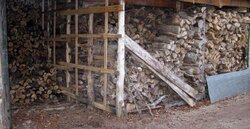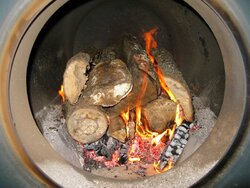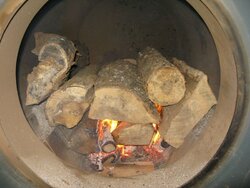My Garn is finally providing heat for my house, domestic hot water, and my workshop.
All insulation is applied and today I should finish mudding the drywall on the front of the Garn
At this time I am manually controlling the pumps to the house and the shop heat exchangers. Next I will install the Taco 503 controller to control the three supply pumps.
I am keeping records of burn times and temperature changes. I have several questions but at this time I am trying to find the answers before I bother the people on this forum unnecessarily.
It was nice to shut off the gas valves and have both levels of the house comfortably warm.
Thanks to all on this forum that have helped me get this up and running. Without your help I would have not tackled this project!
All insulation is applied and today I should finish mudding the drywall on the front of the Garn
At this time I am manually controlling the pumps to the house and the shop heat exchangers. Next I will install the Taco 503 controller to control the three supply pumps.
I am keeping records of burn times and temperature changes. I have several questions but at this time I am trying to find the answers before I bother the people on this forum unnecessarily.
It was nice to shut off the gas valves and have both levels of the house comfortably warm.
Thanks to all on this forum that have helped me get this up and running. Without your help I would have not tackled this project!





